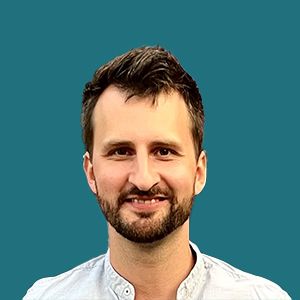Alternative Polyadenylation May Play a Role in ALS Disease Pathogenesis
Sebastian Michels, MD, a postdoctoral fellow and member of the La Spada Lab at University of California, Irvine, discussed how his lab’s findings may open the door to developing RNA therapeutics for ALS.
Sebastian Michels, MD

Despite years of research, treatment options for patients with amyotrophic lateral sclerosis (ALS) remain limited, and as such many institutions are engaged in ongoing research to try to help address the great unmet that exists in this patient population. Currently, this research is largely divided into 2 camps: attempts to develop treatments that slow disease progression and attempts to gain a better understanding of the disease’s enigmatic pathogenesis in order to inform the development of novel disease modifying treatments.
Sebastian Michels, MD, a postdoctoral fellow and member of the La Spada Lab at University of California, Irvine, and his colleagues are currently engaged in research of the latter type. Recently, Michels presented findings at the 148th Annual Meeting of the American Neurological Association, held September 9-12, 2023, in Philadelphia, Pennsylvania, related to how alternative polyadenylation (APA), a mechanism that plays a role in RNA processing and is regulated by the protein TDP-43, may contribute to the origin of ALS.
In an interview with CGTLive™ at the conference, Michels discussed the unmet needs in ALS and the key findings he presented. He also noted that the results were potentially relevant for other TDP-43 proteinopathies beyond ALS, such as frontotemporal dementia or Alzheimer disease, and could open the door to treatment with novel RNA oligonucleotides.
CGTLive: Could you give some background info on unmet needs in ALS and the problem being addressed by your research?
Sebastian Michels, MD: ALS is a neurodegenerative disorder that primarily affects the motor system. The overall prognosis is very dismal with an average survival of 2 to 5 years. So far, current treatment options have only modest effects on the disease course. I believe this is attributed to 2 major challenges that researchers all over the world are trying to resolve. The first challenge is to develop biomarkers that facilitate the early diagnosis of patients before a significant amount of motor neurons are dead in order to enroll patients in clinical trials. The second one is to understand the complex underlying pathobiology that involves an interplay between environment and genetic factors. Our research is trying to address one aspect of RNA metabolism that occurs in ALS and to find new treatment avenues to resolve this problem.
What were the key results you presented at ANA’s 2023 meeting?
In a healthy cell TDP-43 is normally predominantly enriched in the nucleus, where it is involved in various RNA metabolism steps. In a state of disease TDP-43 is mislocalized to the cytoplasm, where it forms aggregates. The research community increasingly recognized that disruptions in the RNA metabolism upon loss of TDP-43 is relevant and a main driver of ALS pathogenesis. What we are interested in is one aspect of RNA metabolism, which is called APA. APA events occur in transcripts that have more than one poly(A) site. Depending on which poly(A) site is being used, the poly(A) machinery can generate transcripts with either longer or shorter 3′ UTR. This is important because within the 3′ UTR there are binding sites for cis-regulatory elements that contain binding sites for microRNA or RNA-binding proteins that have direct effects on RNA stability, RNA localization, nuclear export, or translation ability that then regulate gene expression. TDP-43 can directly bind to the 3′ UTR, either in proximity or further downstream of poly(A) sites, thereby repressing or promoting the use of the site. What we've done is we've used a computational tool, which is called DaPars, to analyze RNA sequencing datasets to investigate APA events that occur when TDP-43 is no longer in the nucleus. By doing that, we found hundreds of significant APA changes in genes that function in pathways that previously have been implicated in ALS pathogenesis like oxidative stress, chromatin accessibility, or axonal transport. One interesting hint that we are further investigating is changes in the APA events of a gene called MARK3 that’s a known tau kinase that might be relevant for ALS pathogenesis.
What would you say are the big picture implications that the healthcare community should take away from those findings?
Our research doesn't only apply to ALS but is potentially relevant for all TDP-43 proteinopathies, such as frontotemporal dementia or Alzheimer disease. We are trying to identify key APA transcripts that are relevant for these diseases to then construct oligonucleotides that sterically block a poly(A) signal to reverse these phenomena.
Were there any challenges or limitations in your study, or have you identified any areas of interest for further research?
As I said, TDP-43 is involved in many RNA processing mechanisms. We are just investigating one aspect of RNA metabolism. I believe, in order to successfully treat ALS and related disorders, we have to assemble a cocktail of different treatment options that address major drivers of the underlying disease course.
Transcript edited for clarity.
Click here for more coverage of ANA 2023.